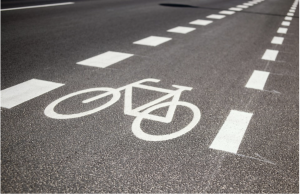Doug Ford says only 1.2% of Torontonians commute by bike. That’s not true.
Jack Hauen, The Trillium, November 7, 2024
The Ford government has started the on-paper process of removing some or all of the bike lanes on Bloor Street, University Avenue and Yonge Street in Toronto.
Premier Doug Ford has justified the decision by claiming that “1.2 per cent of the residents in Toronto commute to work via bicycle.”
“We know that these bike lanes, where only 1.2 per cent of people use to commute to get to work, are taking away almost 50 per cent of the infrastructure on those streets from vehicles,” Transportation Minister Prabmeet Sarkaria said on Friday morning.
The figure is inaccurate.
A poll conducted for the City of Toronto a few years ago found that one-in-10 Torontonians say they bike to work. It also found a full 70 per cent identify as recreational or “utilitarian” cyclists who use their bikes to get where they need to go.
1.2% figure covers entire GTA, predates bike lanes
The 2011 Canadian census asked how people commuted to work, and 1.2 per cent of people in the Toronto census metropolitan area (CMA) said they cycled. The CMA includes most of the Greater Toronto Area — including Burlington in the west and Ajax in the east, reaching as far north as Lake Simcoe.
“This is in massive areas that have no cycling infrastructure whatsoever, and where it’s a frightening place to cycle,” said Albert Koehl, a founder of the Toronto Community Bikeways Coalition (TCBC).
“Factually, that’s the wrong basis of data to use,” said Anthony Smith, a professional planner in Toronto, noting that there was another census in 2021.
The 1.2 per cent figure is “irrelevant” to today’s Toronto, which has since seen a surge in couriers, e-bikes, cargo bikes and Bike Share Toronto trips, Koehl said — not to mention infrastructure.
“2011 — that’s before almost all the bikeways in downtown Toronto were put on the ground,” Cycle Toronto executive director Michael Longfield said.
The Bloor, University and Yonge lanes were installed between 2016 and 2021.
Large majority of Torontonians are cyclists
At least five per cent of people in Old Toronto now primarily commute by bike, said Smith, who compiled data from the 2021 census, the city and the province. The share reaches 10–20 per cent in many core areas of the city, he found.
“And that’s only people who commute every day and indicate cycling as their primary commute,” he said. “So there’s probably another five times that number who bike occasionally.
Recent surveys back up Smith’s comments.
A 2019 poll for the City of Toronto found 70 per cent of Torontonians rode bikes. Forty-four per cent identified as “utilitarian” cyclists, who bike to work, shop, visit friends, etc. Another 26 per cent said they were “recreational” cyclists, who bike for leisure or fitness. Just 30 per cent said they didn’t bike at all. Of all respondents, 10 per cent said they ride their bike to work in good weather.
Bikes made up 37 per cent of rush-hour traffic at two spots along Bloor in the Annex, according to counts done this year by Koehl’s group, the TCBC.
“And that accords with the city’s own numbers,” Koehl said, referring to Toronto’s latest Cycling Network Plan Update in 2019. “Cabbagetown had 34 per cent, and other central city neighbourhoods had between 26 and 33 per cent mode share.”
On one October day in 2022, 38,000 people biked through an area in the downtown core between Spadina, Jarvis, Queens Quay and Bloor, according to a City of Toronto count.
Even in 1999, eight per cent of Torontonians — and 15 per cent in Central Toronto — said they biked to work at least sometimes, according to a City of Toronto study.
If you build it, they will come
Across the world, studies have shown that bike lanes attract cyclists and have negligible impacts on traffic, including emergency vehicles.
In 2013, the average number of cyclists in eight hours along Richmond Street West and Adelaide Street West in downtown Toronto was 400, according to the City. In September 2018, after bike lanes were installed, the average count was 4,780 — a 1,095 per cent increase.
Bloor Street saw a 50 per cent increase in cycling after the bike lanes were installed in 2016. Spending at local businesses also increased.
Bike Share Toronto saw 665,000 trips in 2015, its first year. This year, thanks to more bikes and better cycling paths, it’s projected to hit more than 6 million.
“Doing some shopping, going out for dinner, visiting some friends — those really are the kinds of trips that, with a connected network of bikeways, it means more people can choose not to drive,” Longfield said. “And I think that’s what we’re starting to see around Toronto.”
Critics, including the Ford government, often insist that they aren’t against bike lanes — they just don’t want them on major streets.
“And it’s like, at the end of the day, people need to travel to where they’re going. And so you can’t tell people to take huge, circuitous routes on side streets. It just doesn’t work,” Smith said.
“The region is congested because people are driving from far away places coming into the city, and they should ultimately look at transit and other options as a way of reducing congestion. Bike lanes are not the problem.”
